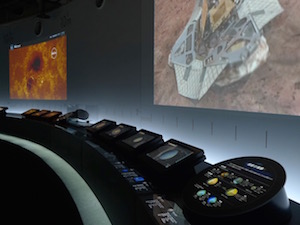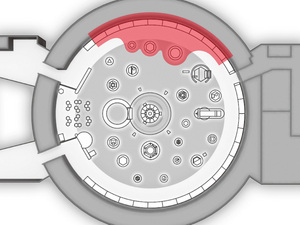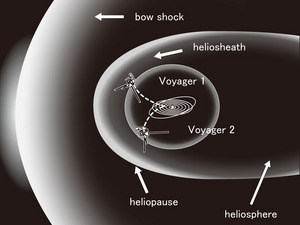Nagoya City Science Museum
TOP > Exhibition Guide > Floor Map> The Solar System
The Solar System



Purpose of Exhibition
Come into this gallery from the north entrance and walk clockwise around the perimeter, looking at the displays, you will travel from our earth to the end of the Universe. The outer ring is lined with various astronomical objects and cosmic events in order. This exhibit is based on the idea of Powers of Ten, where the scale increases tenfold each time.
Your journey now leaves the earth and takes you towards the solar system. Large screens will show you images of solar system objects such as planets, satellites, asteroids and comets; the exhibit also includes planetary motion and gravity, asteroids and comets, extrasolar objects and types of planets. You can even get hands-on experience operating a miniature planetary rover.
Additional Knowledge
[Where Does the Solar System End?]
How far does our solar system go? The solar system extends far beyond the orbits of trans-Neptunian objects, which are a group of objects outside the planets. The sun constantly emits a flow of charged particles, that is, the solar wind. And the range where the solar wind reaches, we call the heliosphere. We can say that the solar system extends to the boundary of the heliosphere, namely the heliopause. To investigate the heliopause, Voyager 1 was launched in September 1977, following Voyager 2 in August 1977. After completing their exploration of the planets, the two spacecrafts have continued their flight out of the solar system.
This page was last edited on 28 June 2022.
Article by Astronomy Section
